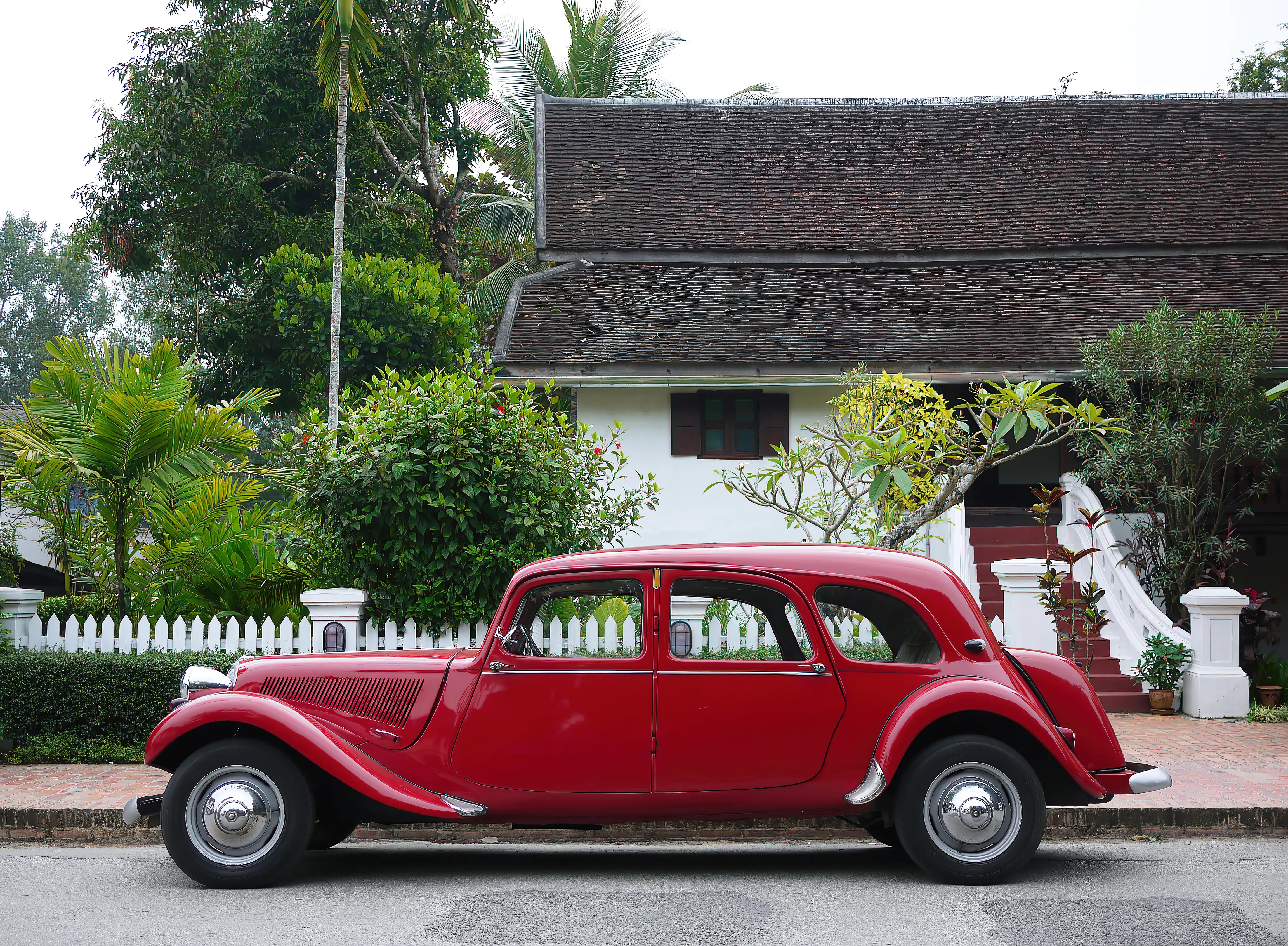The Citroën Traction Avant at 90 by Andrew Roberts
04 March 2024
When Citroën presented the Traction Avant to its dealers in March 1934, it made automotive history. This was not only the company’s first front-wheel drive car, but there was also rack-&-pinion steering and all-independent suspension. Autocar marveled at how the latter allowed the Traction to be driven over bad roads at speeds that were “nothing short of astounding”. Then there was the unibody coachwork created by Flaminio Bertoni which bore no resemblance to any competitor. To quote Brian Sewell:
In 1934, it looked like no other car; in 1946, it still seemed outrageously ahead of every Rover, Wolseley and Triumph; and in 1957, when finally put to rest, it was so eccentric as to be dateless.
The Traction narrative is one of great complexity, and our focus is on the magnificent 2.9-litre six-cylinder 15/6, which Citroën introduced in 1938. It soon became known in France as the Reine de la Route – “Queen of the Road”. Citroën ceased car production in June 1940, but during the Second World War, the Resistance made significant use of Tractions. Manufacture resumed in 1946, and in the 1950s, the Gendarmerie patrolled the routes nationals in 15/6s during the 1950s, striking fear into the hearts of errant Simca Aronde drivers.

May 1954 marked the 15/6H debut, the H standing for the “Hydropneumatic” rear suspension, which could automatically maintain the ride height regardless of load and road conditions. Citroën used the 15/6H as a test bed for Traction’s replacement, as the DS made its bow in 1955. The last 15/6 departed the factory in 1956, while the ID succeeded its four-cylinder stablemates in 1957.
The Traction enjoyed an extensive career in the UK, as in 1926, Citroën established an assembly plant in Slough to circumvent import duties. The British-built models were renamed to reflect local ‘tax horsepower’ regulations; the 11CV Normale became the ‘Big 15’, and the 15/6 was the ‘Big Six’. UK-built tractors had to be made from at least 51% locally sourced components, so their cabins featured leather upholstery, wool headlining, a wooden fascia and a 12-volt Lucas electrical system. Semaphore trafficators were another British addition, and many Slough Citroën were also fitted with a sliding roof.
When Autocar tested the Big Six in 1953, they referred to it as “a car for ‘real motoring’” and that it possessed “good vintage qualities” as well as “modern features”. This neatly sums up the six-cylinder Traction’s appeal – a car whose design was then nearly 20 years old but was more than capable of cutting a dash on the A27.
The following year, The Motor evaluated a Slough-built version with the hydropneumatic suspension. They concluded it was “a car that blends superb roadholding with soft, yet controlled suspension” but “in certain respects is lacking in modern amenities”.
Indeed, the Big Six’s dashboard resembled the bridge of a Victorian steamship, with its mustard spoon’ dashboard lever for the three-speed gearbox and an ‘Advance and Retard’ control for the ignition. The primitive heater was another sign of the Big Six’s age; warm air could be piped to the cabin, but the opening windscreen had to serve as a demister.
At £1,474 9s 2d in hydropnuematic form, the Big Six was also expensive, costing over £400 more than a Wolseley 6/90. But it had no real rivals in this country, for no other large British-built saloon could offer that combination of front-wheel-drive and sheer elegance. As some utterly 1955 advertising copy put it:
Who the devil do they think they are...Lords of the Highway? - you’re inclined to ask yourself, as these Citroen owners sail imperiously past you. On which the blunt commentary is ‘Wouldn’t you chum?’. For it’s quite amazing what a Citroen will do for a man’s morale at the wheel.
And the French-built 15/6 enjoyed considerable fame on this side of The Channel thanks to the BBC’s 1960-1963 adaptation of the Maigret novels. In France, the Police Judiciaire continued to deploy a fleet of unmarked Traction radio cars after its demise, so it was logical for the Corporation to use several 15/6s for location work in Paris. The programme’s star Rupert Davies liked the Citroën so much he bought a principal screen Traction from the hire firm for £30. That 15/6H is under restoration, and we look forward to seeing it returned to its full glory.
And to encounter a Big Six or a 15/6 at a car show is to marvel at its sheer elegance. To quote one advertisement: “The individual and handsome styling of CITROEN gives a distinction that marks it apart from all other cars”. Absolutely.
